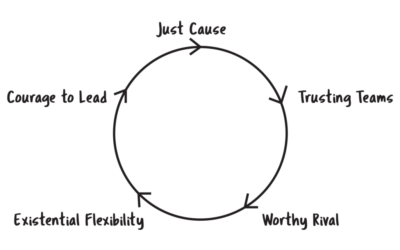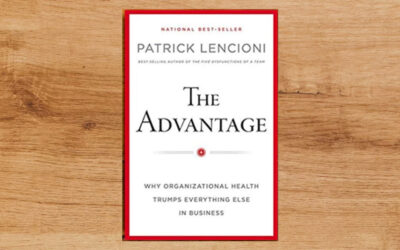“A healthy culture is usually the cause of great market performance, not the result.” Kevin Oakes
In his book “Culture Renovation: 18 Leadership Actions to Build an Unshakeable Company”, Kevin Oakes beautifully highlights the importance of building a solid company culture and offers a detailed blueprint of eighteen steps to transform your culture and sustain it over time.
“Every successful organization needs to prioritize the ability to spot trends that will change the marketplace and disrupt the way it operates. Truly agile organizations can identify the opportunities that will arise from new technologies, regulatory changes, shifts in customer demographics, and other market developments. And they use those opportunities to innovate in anticipation of future market opportunities.”
At Lead Vantage LLP, we emphasize the importance of planning, building, and maintaining a company culture when working with clients. It takes work and plenty of heavy lifting from those at the top! However, culture starts at the top, and adopting a growth mindset is critical in transforming and rebuilding a company’s playbook. Leaders must be willing to invest the time, be open to change, anticipate issues or challenges, adapt quickly, and drive cultural change, even when the going gets tough. Leaders who embody these traits can create cultures based on innovation, agility, and success.
Oakes provides a detailed culture renovation blueprint that he phases into three main sections, plan, build, and maintain. Here’s a little taste! Below we have summarized the first seven.
- Develop and deploy a listening strategy: Engage with your team, listen to them, and ask questions. “Listening to the workforce can help uncover attitudes and issues bubbling under the surface and provide early warning signals before issues become explosive and drastically affect shareholder value … [Listening is] about developing a true understanding of employee sentiment and the culture in which employees work every day.” (Kevin Oakes)
- Figure out what to keep: Understand what to keep and preserve as part of your culture and what to eliminate. Successful companies ensure “that the best of the company’s existing norms were preserved, and fundamental values in history were woven into the new culture.” (Kevin Oakes)
- Set your cultural path: This is about the direction and finding your why. People must understand the North Star to help guide them in their roles. “The new direction should acknowledge and embrace past successes, but set up the organization to forge new ground into an unknown future.” (Kevin Oakes)
- Define the desired behaviours: With a clear path, the next step is to define the standards and expected (and supporting) behaviours. “Companies often have a rhythm and habits … cultural traits are reinforced every day through very overt actions, and every single company has these, whether intentional or not.” (Kevin Oakes)
- Identify influencers, energizers, and blockers: To create a new culture and have it withstand the test of time, companies need to understand who the influencers are to help propel change, reinforce the new culture, and instill passion in the workforce. Equally important, companies must identify who resists change consistently and bring them to the table as early as possible.
- Determine how progress will be measured, monitored, and reported: “It’s important to define upfront what the indicators of a successful renovation should be and put in place mechanisms to monitor progress … 90% of organizations that indicated that their culture change initiative was unsuccessful did not set up measures at the beginning to monitor the change.” (Kevin Oakes). To uncover culture change metrics, look at various avenues, including focus groups, surveys, meetings, one-on-one discussions, and open and informal dialogue.
- Clearly communicate that change is coming: No one likes surprises, especially when it comes to change. Communication is critical and must be rolled out consistently and frequently from the top. When things get tough, communicate, communicate, communicate.
Company culture is an asset. Leaders play a vital role in shaping and reshaping culture. They become the culture champions and set the standard. When you look at your company culture, what three words would you use to define it? Now, choose three words encompassing what you view as a “perfect” company culture. See a difference? If so, it’s time to plan, build and maintain an updated and refreshed company culture. Are you ready?
“…companies that effectively changed their cultures were successful because they were renovating what they had, not starting from scratch and completely rebuilding or transforming.” Kevin Oakes
Does your company culture need a little shake-up? At Lead Vantage, we believe that companies can transform who they are. We are here to help you thoughtfully approach and sustain your cultural change. So get clear on who you are today and who you aspire to be! Contact us to help you on this journey of organizational and cultural change.





